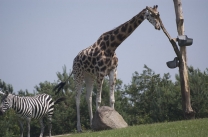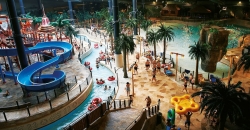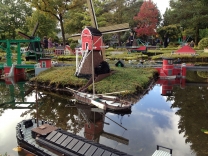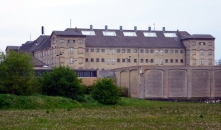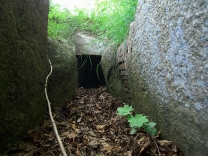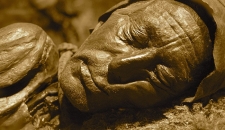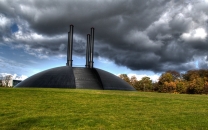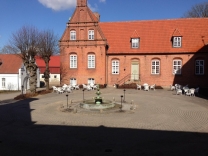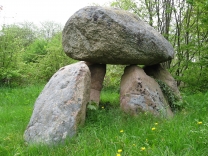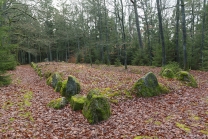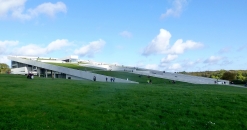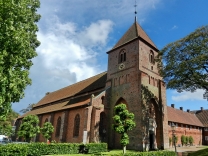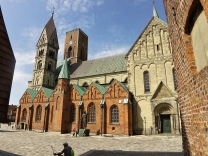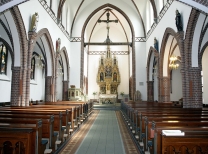No video yet
Jelling stones
The Jelling stones (Danish: Jellingstenene) are massive carved runestones from the 10th century, found at the town of Jelling in Denmark. The older of the two Jelling stones was raised by King Gorm the Old in memory of his wife Thyra. The larger of the two stones was raised by King Gorm's son, Harald Bluetooth, in memory of his parents, celebrating his conquest of Denmark and Norway, and his conversion of the Danes to Christianity. The runic inscriptions on these stones are considered the best known in Denmark.Significance
The heritage site: The runestones in the foreground, in front of the church graveyard. In the far background is one of two mounds.The stones are strongly identified with the creation of Denmark as a nation state. Both inscriptions mention the name "Danmark" (in the form of accusative "tanmaurk" ([danmɒrk]) on the large stone, and genitive "tanmarkar" (pronounced [danmarkaɽ]) on the small stone).
The larger stone explicitly mentions the conversion of Denmark from Norse paganism and the process of Christianization, alongside a depiction of the crucified Christ; it is therefore popularly dubbed "Denmark's baptismal certificate" (Danmarks dåbsattest), an expression coined by art historian Rudolf Broby-Johansen in the 1930s.
Recent history
After having been exposed to the elements for a thousand years, cracks are beginning to show. On 15 November 2008 experts from UNESCO examined the stones to determine their condition. Experts requested that the stones be moved to an indoor exhibition hall, or in some other way protected in situ, to prevent further damage from the weather.
In February 2011 the site was vandalized using green spray paint, with the word "GELWANE" written on both sides of the larger stone, and with identical graffiti sprayed on a nearby gravestone and on the church door. After much speculation about the possible meaning of the enigmatic word "gelwane", the vandal was eventually discovered to be a...






